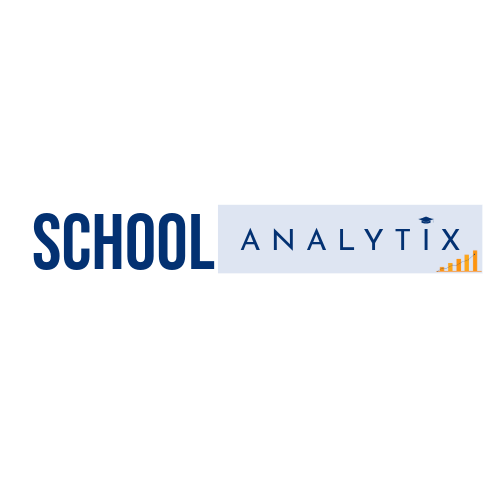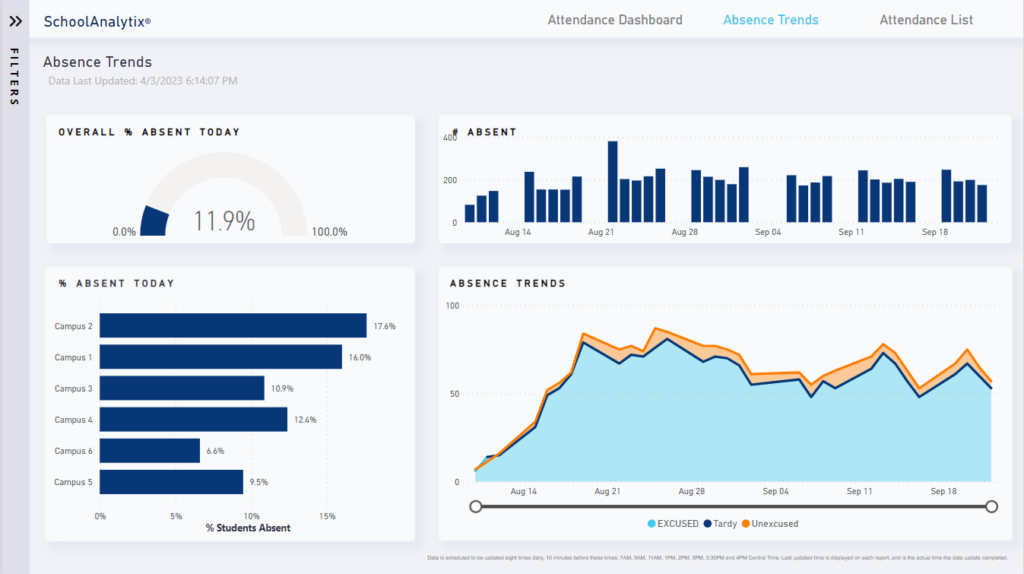In the realm of education, data-driven decision-making has become increasingly crucial. Schools are collecting vast amounts of data on various aspects of student performance, behavior, and attendance. Among these, attendance data stands out as a critical indicator of student engagement and academic success. Analyzing attendance patterns can provide valuable insights into student behavior, identify areas of concern, and inform interventions to improve outcomes. In this article, we will explore how Power BI, a powerful business intelligence tool from Microsoft, can be leveraged to visualize and analyze school attendance data effectively.
Understanding the Importance of Attendance Data
Before delving into strategies for visualizing attendance data, it’s essential to understand why it matters. School attendance is not just about students physically being present in classrooms; it reflects their level of engagement, involvement in learning activities, and overall commitment to their education. High rates of absenteeism can be indicative of various underlying issues, including disengagement, academic struggles, socio-economic challenges, or health-related issues.
By tracking and analyzing attendance data over time, educators can:
Identify Patterns and Trends: Visualizing attendance data allows educators to identify recurring patterns and trends, such as certain days of the week or times of the year with higher absenteeism rates. Understanding these patterns can help schools allocate resources more effectively and tailor interventions to specific needs.
Early Intervention: Detecting signs of chronic absenteeism early enables schools to intervene promptly and provide targeted support to at-risk students. Early intervention strategies can prevent further disengagement and academic decline, ultimately improving student outcomes.
Monitor Intervention Effectiveness: After implementing interventions to improve attendance, ongoing monitoring of attendance data helps assess their effectiveness. Schools can measure the impact of interventions and adjust their strategies accordingly to achieve better results.
Visualizing Attendance Data with Power BI
Power BI is a versatile business analytics tool that enables users to visualize data and share insights across an organization. Its intuitive interface and robust features make it well-suited for analyzing school attendance data. Here are some strategies for effectively visualizing attendance data with Power BI:
1. Data Preparation and Integration:
Before visualizing attendance data in Power BI, it’s essential to ensure that the data is clean, organized, and integrated from various sources. Attendance data may come from multiple systems, including student information systems (SIS), attendance tracking software, or manual records. Power BI allows users to connect to a wide range of data sources, such as Excel spreadsheets, databases, or cloud services, and consolidate them into a unified dataset.
2. Creating Key Performance Indicators (KPIs):
Key performance indicators (KPIs) provide a snapshot of attendance metrics and help stakeholders quickly assess performance against targets. In Power BI, users can create KPI visualizations that display metrics such as overall attendance rate, average daily attendance, or the percentage of students meeting attendance goals. These KPIs can be customized based on the specific goals and priorities of the school or district.
3. Time-Series Analysis:
Time-series analysis allows educators to examine attendance data over time and identify trends, seasonality, and anomalies. Power BI offers powerful time intelligence functions that enable users to aggregate and compare attendance data across different time periods, such as days, weeks, months, or academic years. Visualizations such as line charts or area charts can effectively illustrate trends in attendance rates and highlight any deviations from expected patterns.
4. Drill-Down and Filter Options:
Power BI provides interactive features such as drill-down and filtering capabilities, allowing users to explore attendance data at different levels of granularity. Educators can drill down from an overview of attendance trends to specific groups or demographics, such as grade levels, classrooms, or individual students. By filtering the data based on criteria such as student demographics, socio-economic status, or academic performance, educators can identify disparities in attendance rates and tailor interventions to address underlying factors.
5. Geographic Analysis:
For schools or districts with multiple campuses or locations, geographic analysis can provide valuable insights into regional variations in attendance patterns. Power BI offers mapping visualizations that allow users to plot attendance data on maps and visualize spatial trends. By geocoding student addresses or school locations, educators can identify areas with high rates of absenteeism and target interventions geographically.
6. Predictive Analytics:
Power BI’s advanced analytics capabilities enable users to perform predictive modeling and forecasting of attendance trends. By leveraging techniques such as regression analysis or time-series forecasting, educators can anticipate future attendance patterns and proactively implement strategies to address potential issues. Predictive analytics can help schools allocate resources more effectively and implement preventative measures to reduce absenteeism.
7. Dashboard and Report Publishing:
Once attendance data has been visualized and analyzed in Power BI, it can be shared with stakeholders through interactive dashboards and reports. Power BI allows users to publish dashboards to the Power BI service, where they can be accessed securely from any device. Educators, administrators, and other stakeholders can interact with the data, explore visualizations, and gain insights to inform decision-making and interventions.
Conclusion
Visualizing school attendance data with Power BI offers educators powerful tools for identifying patterns and trends, monitoring student engagement, and informing interventions to improve outcomes. By leveraging Power BI’s capabilities for data integration, visualization, and analysis, schools can gain valuable insights into attendance patterns, implement targeted interventions, and ultimately support student success. As schools continue to prioritize data-driven decision-making, Power BI emerges as a valuable tool in the quest to improve attendance and promote academic achievement for all students.
Leveraging SchoolAnalytix for Expert Guidance
While PowerBI offers powerful analytics capabilities, maximizing its potential for student retention requires expertise in data visualization, predictive modeling, and educational analytics. This is where SchoolAnalytix comes into play. As a leading provider of data analytics solutions for educational institutions, SchoolAnalytix offers a wealth of expertise and resources to support institutions in their quest to optimize student retention.
By partnering with SchoolAnalytix institutions gain access to a team of experienced data scientists, educators, and analysts who specialize in leveraging PowerBI for educational purposes. From dashboard design and customization to predictive modeling and intervention strategies,
SchoolAnalytix provides end-to-end support tailored to the unique needs and goals of each institution.

